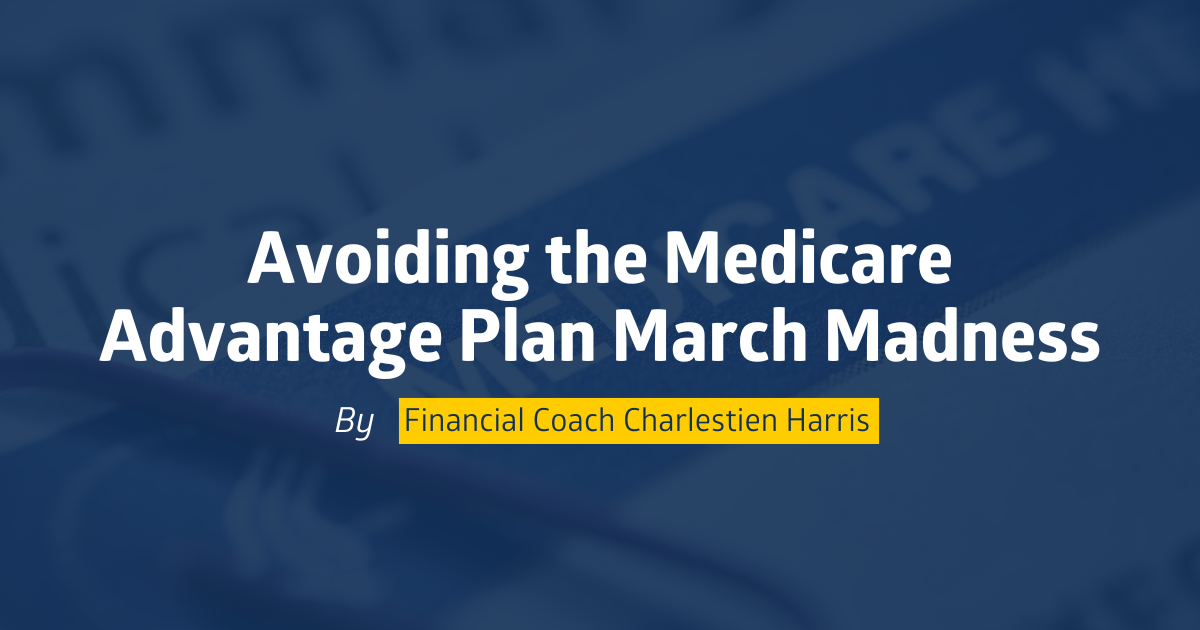By Charlestien Harris
Spring fever is in full swing this month! The infamous March Madness brackets have been announced, and the competition has begun. While this can be a time of renewal and fierce competition, this month is also when you should take care of some financial tasks to ensure that you’re in good shape for the rest of the year. With tax preparation time being on the table now as well, this is a good month to “spring clean” the rest of your finances.
March 31 is a very important date! Understanding Medicare can be very complicated. This federal health insurance program for seniors aged 65 and older and persons with certain disabilities or conditions has multiple annual enrollment periods. You can visit www.medicare.gov for more information. For Medicare Advantage plans, the disenrollment period used to end in mid-February, but now it has been extended through the end of March. Now is the time to explore your plan to make sure you can still see your preferred doctors and that you’re comfortable with the price. If you want to explore other options, you can also get help via your local State Health Insurance Assistance program. You can find yours at www.shiptacenter.org. The main open enrollment period runs from Oct. 15 through Dec. 7, while the Medicare Advantage open enrollment period runs from Jan. 1 to March 31.
There are three main Medicare enrollment periods that you should be concerned about: initial, special, and general. I will define each one so you can get a better understanding of why certain dates are important. This will hopefully help you avoid the “March Madness” when it comes to not missing the deadlines for signing up for Medicare and Medicare Advantage Plans available to most seniors turning 65.
- The Initial Enrollment Period: This is your first chance to sign up for Medicare, generally when you turn 65. This period lasts for seven months, starting three months before you turn 65 and ending three months after the month you turn 65. The date your coverage starts depends on which month you sign up during your Initial Enrollment Period. Coverage always starts on the first of the month. If you qualify for Premium-free Part A, your Part A coverage starts the month you turn 65 (if your birthday is on the first of the month, coverage starts the month before you turn 65). Part B (and Premium-Part A) coverage starts based on the month you sign up. If you sign up before the month you turn 65, your coverage starts the month you turn 65. If you sign up the month you turn 65 or during the 3 months after, your coverage begins the following month.
- The Special Enrollment Period: You can make changes to your Medicare Advantage and Medicare drug coverage when certain events happen in your life, such as moving or losing other coverage. These chances to make changes are called Special Enrollment Periods. The types of changes you can make and the timing depend on your life event. There are other reasons you can also claim that will justify you being able to switch or sign up during this enrollment time. You can go to www.medicare.gov and find additional information on those “special situations.”
- The General Enrollment Period: Between Jan. 1 and March 31 each year, you can sign up during the General Enrollment Period (GEP). Your coverage starts the month after you sign up. The GEP is an opportunity for those who missed their initial Medicare enrollment window to enroll in Medicare Parts A and/or B. Someone joining Medicare for the first time during the GEP will have coverage starting the month after enrollment and may have to pay a late enrollment penalty, which amounts to 10 percent of the standard Part B premium for each full year they delayed. This is a lifetime penalty, meaning that as long as they have Part B, they have to pay a penalty unless they:
- Are eligible for a Medicare Savings Program (MSP)
- Were eligible for Medicare due to disability and had to pay premium penalties, and have since turned 65 In these instances, the Part B penalty is waived.
A Medicare Advantage plan is one of the two main types of Medicare offered by private insurance companies and approved by the federal Medicare program. The other type of Medicare, Original Medicare, is the traditional government-managed health care coverage. During the current enrollment period, seniors with Medicare Advantage plans (with or without prescription drug coverage) have the option to do one of the following: switch to a different Medicare Advantage plan (with or without drug coverage) or switch from Medicare Advantage back to Original Medicare (with or without also enrolling in a drug plan).
All this information can get quite confusing. That is why I have provided you with several websites to which you can refer for current and factual information about the Medicare Advantage Plan sign-up process.
For additional information on this and other financial topics, visit our blog at banksouthern.com/blog, email me at Charlestien.Harris@banksouthern.com, or call me at 662-624-5776.
Until next week – stay financially fit!
